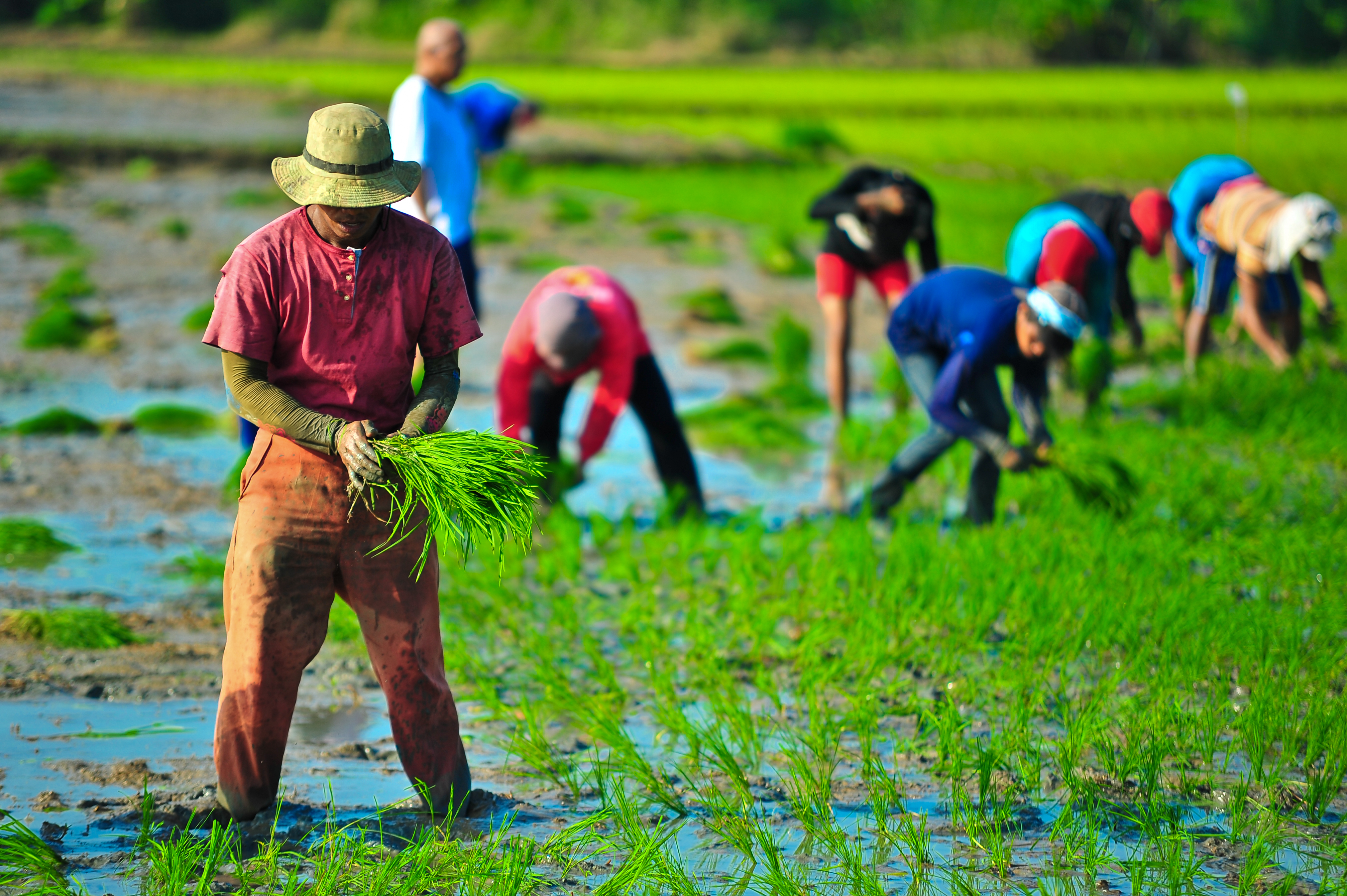Theme 3: Ecological and Sustainable Management of Rice-based Production Systems

Irrigated rice systems account for 75% of global rice production, providing the staple food for about 2 billion people. Rainfed rice systems in lowlands and uplands, on the other hand, provide livelihoods for hundreds of millions of farmers and their families living in some of the poorest regions of the world. Theme 3 is all about accomplishing multiple goals of improving food security, incomes, and nutrition and doing it in a more environmentally friendly and sustainable manner—through innovations for more precise management of future rice-based farming systems. These production systems will be both more productive and more eco-efficient, but also more resilient to climatic extremes and other drivers of change.
Three millennia of continuous production of irrigated rice in Asia, either as a monocrop or in rotation with other crops, demonstrates the inherent sustainability of the system. This historic sustainability is now threatened, however, by recent rapid population growth that leads to a declining share of land, water, labor, and energy resources. Inefficient use or overuse of production inputs may also lead to pollution, environmental degradation, and declining ecosystem services. Nitrogen-use efficiency in most intensive rice systems remains below 40% and unbalanced nutrient applications are still common. By 2025, 15–20 million ha of irrigated rice will suffer some degree of water scarcity, which results from competing water uses and climate change, and requires rethinking of current management paradigms. In northwestern India, declining groundwater levels pose a serious threat to one of the world's most important grain baskets. In fact, rice systems draw much of their ecological resilience from intensive water use (e.g., weed control, control of soil salinity and pH, heat avoidance through thermal cooling), and new solutions need to be found for water-scarce conditions.
In many areas, the ecological resilience of rice ecosystems and their capacity for natural control of rice pests are weakened by the overuse of pesticides and breakdown of rice host-plant resistance. Animal pests, diseases, and weeds are responsible for a 25–45% loss of rice production in tropical and subtropical Asia. Market-driven diversification of rice-based cropping systems, while offering potential for increasing farm income, also presents new challenges for sustainable management. If done wrong, it may lead to a decline in soil health and productivity. Overarching these issues are the threats of—and opportunities from—climate change. Besides increased temperatures, stresses such as flooding, drought, and salinity, which are widespread in rainfed environments, now encroach on irrigated environments as well.
In Latin America, irrigated rice monoculture is the most common system in the tropics, while monocropping and crop rotations are predominant in the southern temperate regions. Yield gaps are high throughout the region. In Africa, lowland rice is cultivated along an intensification gradient, ranging from practically undisturbed inland valleys to intensively cropped irrigation systems. Fertilizer use is generally very low, mainly because of high prices and poor distribution networks. Gaps between attainable and actual yields are high, even in input-intensive systems. Because most rice is grown under rainfed conditions, drought is a major determinant of yield, often in combination with phosphorus deficiency. Even in Asia, about half of the rice area is affected by drought, uncontrolled submergence, or salinity. Yields in these stressed environments are typically low, in the range of 1–2 tons per hectare, and poverty is extreme and widespread. Moreover, climate change is expected to exacerbate the frequency, severity, and extent of these stresses. In Asia, Africa, and Latin America, rice is also cultivated in upland ecosystems (about 40% of the rice-growing areas in sub-Saharan Africa and LAC). Uplands are extremely diverse and fragile, and deep poverty is found among upland farming communities where socioeconomic constraints hamper intensification and the development of more profitable farming systems.
There is still large scope for significant and sustainable increases in rice productivity globally through improved agronomic practices. Water-saving technologies such as safe alternate wetting and drying (AWD) and dry seeding not only offer hope for rice farmers affected by water scarcity but also can free up water from rice-growing areas for other economic or environmental purposes. The novel system of aerobic rice, in which rice is cultivated in nonpuddled and nonflooded soil just like wheat and maize, drastically reduces water requirements and allows cropping of rice where a lack of water has made this impossible till now. Site-specific nutrient management (SSNM) greatly increases the use efficiency of applied fertilizers and can increase yields, reduce losses to the environment, and increase the profitability of farming. Through the development of new machinery and resource-conserving technologies (RCT), principles and practices of conservation agriculture (CA), which hitherto have mostly been used in dryland crops, now have scope for application in both single-rice and diversified rice-based cropping systems. Landscape management by ecological engineering can increase ecological resilience against invasive pests such as brown planthoppers and thus reduce the need for application of pesticides. Regional strategies for the deployment of resistance genes against pests and diseases can increase the durability of varietal resistance. New rice varieties with increased tolerance of drought, submergence, and salinity are becoming available and targeted management technologies help exploit the genetic potential of these varieties in farmers' fields. Emissions of greenhouse gases can be reduced by modified water and nutrient management, such as AWD and timely tillage and residue management. Altogether, new crop and resource management technologies offer tremendous scope for reducing yield gaps, increasing rice production, and protecting the environment, with positive benefits for both rice farmers and society at large.